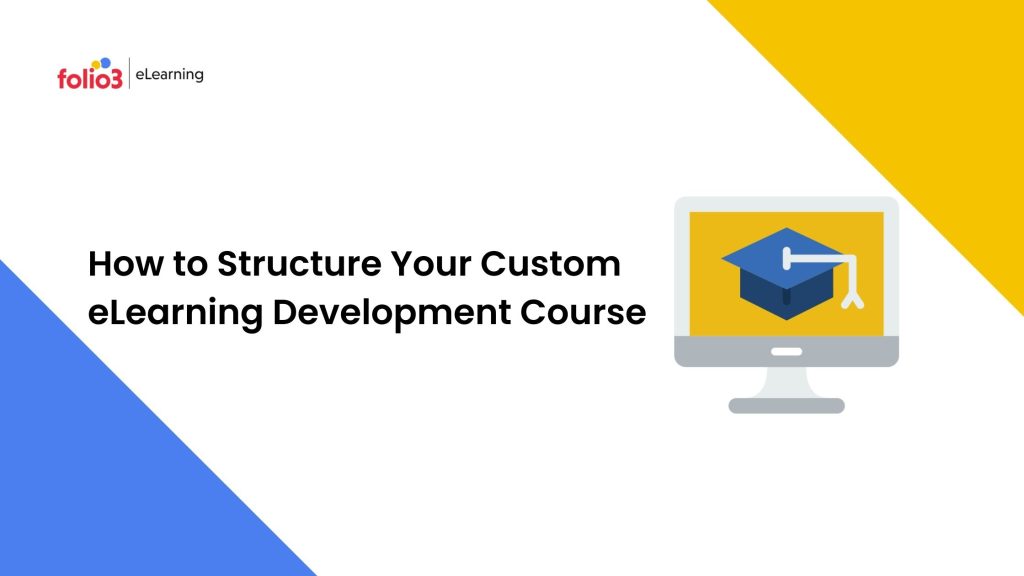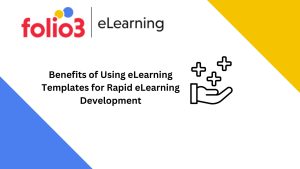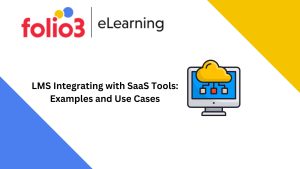
Whether you’re new to eLearning, or already a pro at designing eLearning solutions, you must be aware of the importance of the structure of your custom eLearning development course. Your eLearning course will only be effective if your learners understand the subject matter, remain engaged, and retain what they have learned. This is exactly where the structure of your eLearning course comes into play. The way you structure the course affects the level of engagement of your learners, which in turn has a direct effect on how much knowledge is retained by them.
This article will show you how to structure an online course by breaking it down, organizing it, and giving it the best possible structure to help your learners retain the maximum possible knowledge. Are you ready to learn how to perfectly structure your custom eLearning development course? Let’s go!
1) Decide the course goals and the subject matter
What exactly is your eLearning course all about? What is it trying to achieve? Who are your learners and what is their profile? How much do they already know about the subject? What exactly do you want to cover in your custom eLearning development course, and more importantly, what do you wish to achieve with the course?
It is best to be precise and not derail the subject matter for a good, engaging course. When you are designing eLearning courses, only include the information that helps you achieve your eLearning goals, and then stick to it!
2) Break down the eLearning course into modules
You already know what you want to cover, so this step is easy, and it is where the actual structuring of the eLearning course starts. Whatever subject you may have chosen, you have to determine if it can be broadly divided into a suitable number of modules to make it easier for the learners to progress through the course.
Even though this is one of the easier steps, it is also one of the most important steps when you are learning how to structure an online course. This is because breaking down the course also helps us prioritize the content and decide which parts can be assessed differently from the others.
3) Further breakdown of each module into different sections
When you are designing eLearning solutions, you have to focus on organizing your content in such a way that it does not get boring, and still falls into a cohesive outline. This step helps you achieve just that. When you break down the module further into sections, you can provide instructions in a more innovative manner. For instance, if you are designing your solution in the form of a game, you can create a different world for each module and then the different sections can be in the form of levels.
Once your subject content is ready, do remember to organize it on a slide deck so that it is easier for your development team and designers to access and incorporate it into the final solution.
4) Use or build a custom theme that goes with your content and structure
Your custom eLearning development course needs a theme that is tailored to the content and the structure you have formulated. In other words, whether you choose a template or get your theme developed from scratch, it should reflect the structure you spent time formulating otherwise there is no use for the structure!
Your theme should also show progress in a suitable manner so that your learners can gauge how much of the course they have finished and how much they have left to do.
5) Create links between the different sections and modules
This is one of the most important things that you learn when designing eLearning courses that keep learners engaged. Creating links between your sections and modules helps your learners take a more self-directed approach to learning. It prevents them from getting bored and lets them fully absorb the content and learn at their own pace.
For instance, if a learner already has plenty of knowledge about a certain section or even module, then he or she should be able to choose another section or even go straight to the assessment without going through the course content.
6) Build a roadmap to achieve the perfect custom eLearning development course
Always have a roadmap for the learners so that they have visibility on what they are going to learn and when. Learners today like to know what they will be learning about and how long it will take before they actually get down to it, so a roadmap is very important. It helps them anticipate what they will learn next so they can tune their minds accordingly.
You can be innovative while building your roadmap, which will appear right at the beginning of your eLearning course. It can be a flowchart, a video, or even a map of different worlds if your course is in the form of a game.
That was it! Wasn’t that easy? Breaking down tasks always makes them easy and more manageable. An overwhelming amount of content isn’t going to help anyone.
Microlearning is the new narrative, which also gives your learners the power to learn at their own pace and choose what they want to learn.
This is why the structure of your custom eLearning development course matters and can pave the way to maximum engagement and retention for your learners.
Do you want to know more about how to structure an online course?
Talk about your custom eLearning module development with one of our eLearning experts!
FAQS
Set clear goals (Capture)
Develop a design vision (Conceptualize)
Create your content (Create)
Analyze and iterate (Cultivate)
Measure and optimize (Commercialize)










